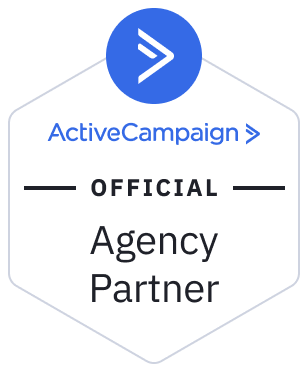
Carlos Corredor is the Co-founder and CEO of Condor Agency, an ROI-driven digital marketing firm. He has 10 years of experience working in digital strategy and analytics and measuring the impact of marketing initiatives on business outcomes. Before Condor, Carlos was the Senior Manager of Digital Marketing and Analytics at Rise Interactive.

Antonio Santana is the Co-founder and President of Condor Agency, which also functions as a staffing agency connecting US businesses with qualified, English-speaking Latin American talent. As a sports entrepreneur, he is also the Founder and Director of Wahoo, a platform that helps MLB teams find optimal prospects in the international market.
Here’s a glimpse of what you’ll learn:
- Carlos Corredor discusses his expertise in and passion for data analytics
- Making data-driven decisions for a positive ROI
- Issues that impact data analytics
- Misinterpreting data can lead to flawed decision-making
In this episode…
Data analytics plays a crucial role in marketing decisions as it can help businesses ensure a positive ROI. However, incorrect data can lead to misinterpretation. How can this be prevented?
Carlos Corredor emphasizes that it’s essential to have a thorough understanding of the desired platforms, such as Google Ads, Python, or Google Analytics, before inputting data into the software. The generated report must be carefully analyzed, paying close attention to various aspects, including conversions. This requires a mathematically inclined person with business acumen due to the multiple tables illustrating dimensions and metrics.
In this episode of the Tailwind Marketing Podcast, Chad Franzen of Rise25 returns to interview host Carlos Corredor, Co-founder and CEO of the Condor Agency, about leveraging data analytics to make informed decisions. Carlos explains his expertise in and passion for analytics, how data-driven decisions impact ROI, and the issues associated with managing data.
Resources Mentioned in this episode
- Carlos Corredor on LinkedIn
- Antonio Santana on LinkedIn
- Condor Agency
- Wahoo
- Chad Franzen on LinkedIn
- Rise25
- The Signal and the Noise: Why So Many Predictions Fail-but Some Don’t by Nate Silver
- Moneyball: The Art of Winning an Unfair Game by Michael Lewis
Sponsor for this episode…
This episode is brought to you by Condor Marketing & Staffing.
Condor is an ROI-driven digital marketing agency built by entrepreneurs for entrepreneurs.
Our expert team helps clients identify and execute initiatives focused on business growth. We aim to democratize digital marketing with proven strategies and measurements that guarantee a return on investment by leveraging innovative technologies and the support of our Latin American office.
We provide strategic digital marketing advice, website development, content generation, SEO, performance marketing, social media marketing, CRM and email automation, web analytics and BI reporting, video production, and staffing services.
To learn more about our execution of ROI-focused marketing, reach out to us at CondorAgency.com or email us at support@condoragency.com.
Episode Transcript
Transcript
| Time block | Transcript |
| 0:00 – 1:00 | Carlos: Hi, welcome to another episode of Tailwind Marketing. And today’s episode is brought to you by Condor Marketing and Staffing Agency. Are you generating pipeline like it’s 2024? Most marketing teams of IT companies struggle to drive sales. We help them leverage data and technology to make the most with their budget and get credit and respect from the rest of the organization. And you can learn more at condoragency.com. I have Chad here from Rise25. Chad has done thousands of interviews in other business and marketing podcasts as well. And today we will be discussing our story with analytics and our approach to numbers in general. So welcome Chad. |
| 1:00 – 1:13 | Chad: Hey, thanks so much, Carlos. Great to be here. Hey, yeah, I’ve talked to you before and you told me kind of, you have a specific expertise in analytics. Can you just kind of refresh my memory and maybe elaborate on how that came about? |
| 1:14 – 4:06 | Carlos: Yeah, so even before the agency and we started Condor five years ago, but as a kid I used to love baseball. So that’s how I really got into numbers. Reading statistics, playing fantasy baseball, doing my own projections for players, understanding statistical models, not only for baseball but for sports in general. So, you know, I’ve always had a passion for sports and I think in consequence for numbers to be honest. And then really the first project where Antonio and I, Antonio is the other founder of Condor, but before Condor we had, we developed a statistical services company for sports newspapers in Venezuela and in the Dominican Republic. That’s how we got started and we didn’t know anything about websites or digital marketing for that matter. So that’s how we learned how to build that. And I realized that, I used to be a baseball journalist actually, but I realized that that’s what I wanted to do, is more on the digital side of it and not on the journalist side of it, right? So I went, I did a master’s in digital marketing and to gain more experience in the field, I started working at an agency in Chicago, that was, and my role was being the manager of the analytics team. So it was not a coincidence, kind of like one thing led to another. So I led a team of marketers, data scientists, we use predictive analytics, but with marketing data, right, I was there four years. And obviously I learned a lot of how those two worlds met and what you needed to get the best insights possible from that. And then when we started Condor, obviously we had already that background. So the first thing, the first type of profiles that we hired, they were data scientists and engineers. So we have those type of people doing paid campaigns, analyzing the marketing data. And then because of the networking that I had while I was working, it was called Rise Interactive, or it is called Rise Interactive, that agency and our beginnings. And that also led us to do work for other marketing agencies while labeling our analytics service. So we got exposure to enterprise, from enterprise-level clients to startups and everything in between. And that’s really how we started and what got us to build that kind of DNA, in analytics DNA in our agency. |
| 4:07 – 4:23 | Chad: So when you say you use predictive analytics using marketing data, can you give me more of like a specific example of some group of numbers you might use and you plug that into your formula and then outcomes something that Condor Agency would do? |
| 4:24 – 6:32 | Carlos: Yeah it’s a cool project, that can, where the two worlds can meet. So, for example, Google Ads, that’s, even though it’s a campaign, it’s an advertising campaign, it’s much more numbers-driven than, let’s say, a Super Bowl commercial. A video for a Super Bowl ad. Heavily data-driven, because it’s all, there’s not even an image until you get to the landing page. But in the Google platform, you only see a link, and it’s what words you put there, and how people engage with those words. That’s clicking, reading, and obviously then, in the landing page, it’s more important, the creative portion, but there’s a lot of numbers in Google Ads campaign. So when a client spends millions of dollars in a group of 20, 30, 40 keywords and small variations of that keyword, broad match, exact match, etcetera, suddenly you start to get a lot of data that interpreted in the right way, can mean, millions of dollars in positive ROI for the client. So how does seasonality play a factor? How do you, should you put the next $100,000 into this keyword versus the other one? Understanding seasonality, understanding when you get to a certain threshold of impression shares, how your revenue starts to go down, combining those two things with the budget, with your business goals, because maybe you need to promote one service heavier than another one. So if you combine all of those elements, then that’s when magic starts to happen. That’s just one example where you can, a very obvious example in the digital marketing world where you need to make data-driven decisions. |
| 6:33 – 6:47 | Chad: So I’m sure there are some, you know, problems with relying on data. I know probably there’s technical elements, there’s human elements. Take me through some of the technical issues that might involve technical problems associated with using data |
| 6:48 – 9:34 | Carlos: Yeah, so it’s interesting because I will get to the human part, but yeah, technical elements is first of all, having the data that you need. When you ask a question, what was our ROI on this campaign? If you ask a question to your marketing agency, to your marketer, it’s very often they don’t have to, oh, I have to put that report together. And then, OK, are they gonna talk about conversions, which are provided out of the box by Google Ads? Or are they talking about how many clients you close? Because if you’re gonna talk about that, or at least the pipeline that you generated, what came from referrals, what came from email marketing, what came from Google Ads, if it’s from Google Ads or LinkedIn Ads, in what campaign, what keyword, right? You need to integrate those platforms, in particular your CRM with the paid platforms and web analytics. So you can start talking and measuring in terms of pipeline, in terms of clients close, and not in terms of impressions and clicks. That’s, for example, you know, for one of our clients, that’s a problem that they have. As they say, garbage in, garbage out. And that’s for a client, but I can explain you for ourselves. We are a marketing agency, and sometimes we help other marketing agencies with staffing, with analytic services, and a lot of times it’s for their own data and their own business. For example, for our business, we have to integrate project management data, to understand our gross margins by, let’s say, service, by client. We need to integrate the project management platform, like a ClickUp or a SAN or whatever it is, to our time tracking software. In our case, you know, we’ve used Harvest, Clockify, or even the project management itself sometimes has that, with your revenue data that might be coming from your financial platform like your QuickBooks, with your own spreadsheets where you have salary information and some other data that you need to understand, okay, how much is it costing me to deliver this service or buy deliverable, what’s profitable, where do I have to improve my margins, what do I need to do more and I need to go out and sell and what type of products I need to forget about or at least to improve the quality so I can sell them at a higher price? So if you don’t have the right data in place, those are the technical integrations that agencies and B2B companies often face. |
| 9:35 – 9:40 | Chad: And you’re able to help people with the correct data then? |
| 9:41 – 10:04 | Carlos: Right. Exactly. Because again, from a technical standpoint, you need the technical skills. You need people to understand not only Python, they need to understand Python and Google Apps, or they need to understand QuickBooks, API, and Google Analytics, downloads, and how to automate all of those things together. |
| 10:05 – 10:13 | Chad: And then once you have that data, I mean, you mentioned garbage in, garbage out, how do you keep it from being garbage out? |
| 10:14 – 11:31 | Carlos: Well, I say a lot of times people, they get a report and they don’t have good insights. And that’s because again, they use the wrong input, right? They were only looking at their web analytics, for example. And just to give an easy example, if you’re only looking at the conversions, but you’re not understanding how many of those turn into clients, for example, that’s what I call garbage in. Or if you don’t have the automations in place to clean the data before you transform it and put it in the report, then you’re going to have nonsense numbers to show to your boss, to your client, etcetera. So that’s what we usually mean with garbage in, garbage out. And yeah, how to prevent it? I think you need to have screwed up a few times to understand how not to do it again. But it’s a combination. It’s a combination of technical skills, of a good QC checklist on your end, of conversations that are structured with your client that are based on goals, so you know how to report on business goals and not on marketing metrics. I would say it involves all of that. |
| 11:31 – 11:38 | Chad: And then I know there’s kind of just a human element that can cause problems with data. Tell me a little bit more about that. |
| 11:39 – 16:39 | Carlos: Yeah, and I think that’s actually the most challenging. A lot of times you think it’s challenging, but it’s always a challenge because from a technical standpoint, not anyone can do it. And even after you solve the integration, there are those couple of other things that I mentioned. But it’s been more challenging for me personally and for us as an agency and for our clients, usually to build that mindset in the team that as you mentioned, the human element, right? Where you need to have a person that is, you know, it’s a numbers person, that is a business-minded person, more than just numbers. That’s a challenge because, ultimately, when you have the right data, it’s really the interpretation of that data. The data can be accurate, but a lot of times you’ll see tables with 10 dimensions, 10 metrics, different time periods, and it’s understanding, as one of my favorite books is called, separating the signal from the noise. Very few people have the ability to do that. Finding, I always tell the team, when they just throw out a number, is, okay, so what? What are you trying to say with that number? That’s, you know, having a person that can tell a story focusing on the right insights, that’s the most challenging part. I’ll give you an example. We also work, you know, we launched a non-profit during COVID to leverage data in Latin America in particular, to understand what areas and cities needed to be more strict or less strict with measurements because they were not using data, they were just panicking out of what the media said. And there’s a lot of people in charge. And in this case, we’re talking about newspapers, for example, or media outlet. But the same thing can be said about marketing that have a really high responsibility. And really, they’re not up to the challenge or what that responsibility and the impact that it has. For example, I remember, you know, during that time, first year of COVID, you know, you would read a headline in a newspaper that says, you know, we’ve reached 100,000 deaths this month, right? And if a person reads that, you know, what is so what of that, right? I mean, if you read that, what is your reaction? Chad: Well, this is terrible. Right. I need to lock myself inside my house because, wow, 100,000 people died. It’s right there. I read it there in the newspaper of your city or a national newspaper. But in reality, if you interpret the data, you say, okay, it’s been the sixth month with a downward trend in deaths. And beyond that, two months ago, the vaccine is available and the people that have gotten COVID and the vaccine is available and the people that have gotten COVID and have had the vaccine, has a death rate of less than 0.5%. And actually the message is, don’t worry, if you’re in the city the vaccine is available and if you already have the vaccine, is not a concern anymore. So, se how different it is when you interpret the two interpretations from the same data set that you get. So a lot of time that happens in marketing, in the case for example of a marketing or status meeting, it’s a very common example between the agency and the client, the agency they come see it and they say you know what, this quarter we improved our cost per click by 15%, so what? Is that good? Is that bad? whereas if you have a person representing your agency that comes in and says okay, doesn’t even mention cost per clicks but they come in and they say you know what? Our pipeline went down this month because we pushed, even if the conversions went up, those people didn’t become, they were not ready to buy, they were not qualified by the sales team and that’s because we pushed too much educational content, so we need to develop more content, videos that are more towards decision makers that are ready to buy. That’s an interpretation that would have an impact on the business, and there are very few marketing analysts, agencies, or departments that combine the two things: the technical capabilities with the interpretation capabilities, let’s say. |
| 16:39 – 16:56 | Chad: Is there a commonly misinterpreted piece of data that you find in a lot of your clients like were depending heavily on before they met you and you were like okay maybe we need to look at it differently or it kinda varies from case to case? |
| 16:56 – 19:16 | Carlos: Yeah, I think more than the piece of data I think it’s the person in charge, I rather a person that comes to me and says hey you know what I don’t understand numbers, I don’t want to do this. The most dangerous ones are the people that say that they’re great with numbers and they come out and they spit numbers left and right: and we increased 60.5% and here and here. And if you don’t know how to explain what that means, having that critical thinking to – that could be a report, it could be a person, it could be an agency, it could be a study. The most dangerous ones are “recent studies show that doing x and y we would increase or decrease x metric by x percent” it’s like who did that study? What type of companies? In what context? In what year? Who responded that? I’m not saying the study is wrong but you need to understand that context. A lot of times you don’t need data to make a decision, and that’s something you also need to understand. If you know that your current page doesn’t explain your business well, you don’t need to do an AB testing comparing with new page that you know explains your business better, it’s not a matter of data, it’s like sometimes you need to know when your intuition is more important. And when you shouldn’t let yourself be convinced by again this dangerous folks. But I think it applies to every data set, in general I would say the most common mistake is looking at a platform’s data in a side role. Whether that’s a payroll platform, email marketing platform, if you’re not looking to tie it to the business whether that’s your CRM, bank account, an excel, where you’re doing the math if that’s the case… That’s the most common error, it’s just looking at a single number or a single plaform or a single data set without more context. |
| 19:16 – 19:29 | Chad: Yeah it sounds like knowing the right questions or the right nuances that can be associated with some particular point is very important to not everybody just automatically knows those things. |
| 19:29 – 20:57 | Carlos: Yeah, exactly, exactly. A lot of times I – one of my favorite movies is Moneyball, actually I read the book, I don’t know if you’re familiar with that movie? Chad: No, yeah I – every time I come across the movie on TV I just have to stop and watch the rest of it. Carlos: Right, obviously is a true story, from the Oklahoma athletics and that’s like the bible of the nerd baseball fans. It’s the book that the movie was based on, and the book came like 10 to 20 years ago, I don’t remember it exactly. I read the book when it came out and obviously I saw the movie, even though a lot of people when they read the book they don’t like the movie. I still love the movie, and that’s – it’s kind of like that. There’s a lot of misconceptions. My first barrier needs to be a skinny guy, you know that runs fast, and then these guys are putting a chubby guy because he can walk. And the same thing applies to marketing and if you can find that way of analysing both your own data and the third party data to make better decisions you definitely have a competitive advantage in a marketing world that’s more competitive by the day, by the minute. So, yeah. |
| 20:57 – 20:57 | Chad: What’s your favorite scene from Moneyball? |
| 20:58 – 21:05 | Carlos: Let me think |
| 21:05 – 21:05 | Chad: I can tell you mine |
| 21:06 – 21:06 | Carlos: What’s yours? |
| 21:07 – 21:43 | Chad: When Brad Pitt, Billy Beane, he goes into Art Howe’s office and he goes: you need to pay or you need to play in the first base from now on. No I’m playing Peña, so we traded Peña. And he’s like as far as Gian, he’s gone too, and flips out and of course they start winning Art Howe got all the credit when really it was their approach using analytics and Art Howe was like irrelevant, not how ended up looking at a job and actually got fired like two years later. |
| 21:43 – 22:28 | Carlos: Yeah I remember one that was funny and it’s funny because it happens. That there’s a prospect that has good skills or tools or is somewhat good and the Scout says no let’s not sign him, he has an ugly girlfriend. Just a lack of self-confidence. And like I understand how that – when you have absolutely nothing else, like that’s the only data point you have and you need to make a decision based on that, I get it. But if you have all the type of data is a little bit more trustworthy. Yeah, that’s a great movie. Amazing movie. |
| 22:29 – 22:35 | Chad: Okay, well, hey, Carlos. It’s been great, a fascinating conversation, great to talk to you today! Thank you so much for having me. |
| 22:·35 – 22:41 | Carlos: Thank you, Chad. I hope we talk soon. And thanks everybody for listening in. |
| 22:41 – 22:42 | Chad: So long, everybody. |








